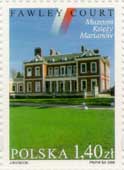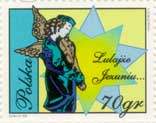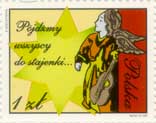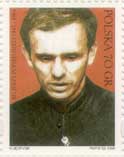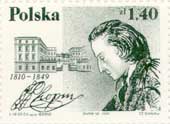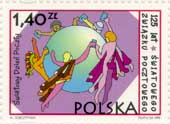There is a 125th anniversary of the World Postal Union - UPU (Union Postale Universelle). The Polish Post shall introduce a stamp representing the logo of the union. It is a monument erected in 1909, made by Rene de Saint-Marceau. It represents the Earth Globe with five forms turning around it (symbolizing five continents), handing over letters. The symbolic character of the monument was adopted to be an emblem of the Union. It appeared on the cover of "Union Postale" in 1951 for the first time and it was used on envelopes and official documents of UPU.
The World Postal Union is an organization that was founded to establish and determine rules of the international co-operation between national postal administrations.
The chief director of the Post of the United States of America, Montgomery Blair, undertook an initiative to organize the first international postal conference in 1862, which was supposed to solve the problem of a joint system of fees. Representatives of 15 countries from Europe and America came to Paris. They discussed main rules referring to the international exchange of parcels. Unfortunately, the conference in Paris did not lead to the foundation of the union.
Another initiative, this time of a high postal official of the German Confederation, Heinrich von Stephan, undertaken in 1868, referred to the need of an establishment of a base of the General Union of the Post, grouping European countries, some countries on the Mediterranean Sea, as well as America. The project was realized as late as in 1874, when 22 founding countries signed the Bern Treaty.
The treaty ensures sovereignty and independent of national postal administrations, eliminated barriers that posed a threat to postal parcels within political and territorial borders of individual states. It précised rules of the functioning of the most important postal services connected with sending letters, postcards, magazines, etc.
During the following congress in Paris in May, 1878, where 22 member countries participates, there was adopted the name Union Postal Universelle (UPU) utilized till the present time.
The World Postal Union quickly won a respect among all countries of the world. During the 20th congress in Washington it had already 169 members. Poland joined it in 1919 as the 77th member. Delegates of the Polish Post participated in the sessions of the 7th Congress of UPU in Madrid in 1920 for the first time.
On the day of introducing the stamps into the market, there will be sold first day envelopes in the Post Office Wrocław 1. |

